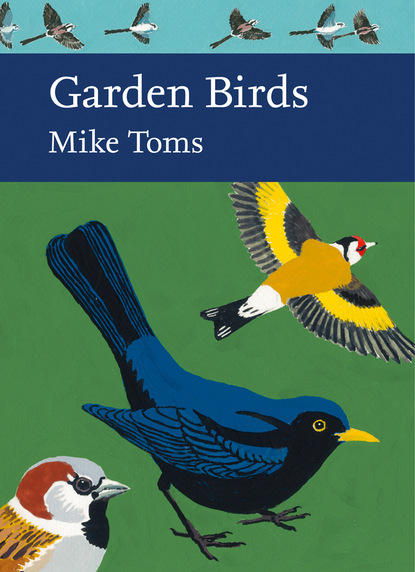
Полная версия:
Garden Birds
The features within a garden may sometimes be more important than those in the surrounding landscape, as work carried out in Hobart, Tasmania, demonstrates. Daniels and Kirkpatrick (2006) examined how garden and wider landscape features influenced the abundance and species richness of bird species in 214 suburban gardens and found that the percentage cover of shrubs had a very important influence on the garden birds present, with the presence of shrubby vegetation favouring small native woodland birds and the New Holland Honeyeater Phylidonyris novaehollandiae in particular. The same study also underlined the importance of native vegetation for the nectar- and fruit-eating bird species native to Tasmania, but did note that such species also made use of non-native plants. In contrast, introduced bird species – such as Blackbird, House Sparrow and Goldfinch – only used non-native vegetation.
A piece of UK work looking more broadly across a single urban area – the city of Bristol – identified three different bird communities: one composed of species associated with broadleaf woodland and/or inland waterbodies, one associated with high-density housing and residential gardens, and one intermediate to these two and associated with low-density housing and variable amounts of woodland (Baker et al., 2010). More detailed examination of these three communities suggests that the diversity of bird species present within urban areas may be dependent on the availability of blocks of natural and semi-natural habitat, with areas dominated solely by residential gardens supporting fewer species. However, despite the lower species diversity of residential gardens, these areas may support particularly high densities of those species that are present. This is something that is reinforced by other work (e.g. McKinney & Lockwood, 1999).
The spatial arrangement and pattern of gardens and other forms of urban green space also has consequences for the extent to which birds use different patches. Connectivity of suitable habitat patches may be less of a problem for birds than it is for less mobile species, but it has still been shown to be of importance. Esteban Fernández-Juricic, for example, highlighted the importance of wooded streets as potential corridors for birds living in urban Madrid (Fernández-Juricic, 2000), while work in North America has revealed that even the movement of urban-adapted species is influenced by the structure and composition of urban habitats (Evans et al., 2017).
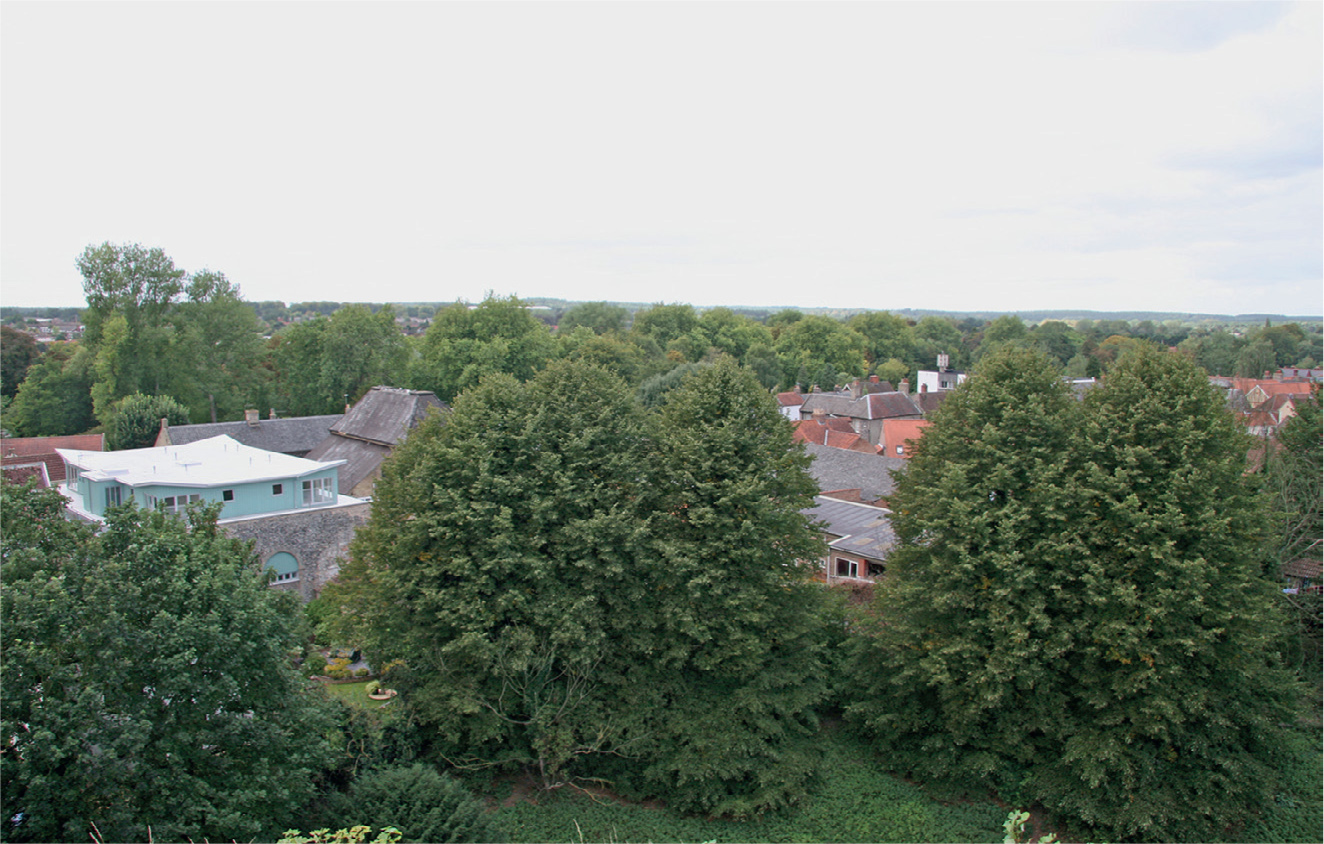
FIG 8. The presence of green cover within urban areas is of particular importance to urban birds, shaping both their distribution and their ability to move between different parts of the built environment. (Mike Toms)
While there has been relatively little work examining how features within and around gardens influence the bird species present, rather more work has been done on other components of urban green space (Jokimäki, 1999). Some of the findings from these studies may provide an indication of how similar features may influence garden bird communities. Work on areas of public green space within London has, for example, underlined the importance of patch size, the presence of waterbodies and the provision of areas of scrubby cover and weedy patches (Chamberlain et al., 2004b). Importantly, some of this work has also underlined the importance of gardens in promoting the species richness of the bird communities using other types of urban green space, such as parks (Chamberlain et al., 2004b). Interactions between gardens, urban green space and the wider built environment may be complex, with the non-biotic components of a city (such as building height and architectural style) also a potential influence on the nature of the bird communities present. Work in Paris, for example, has demonstrated that building height can influence the abundance of particular avian guilds, such that the abundance of omnivorous species was found by Vincent Pellissier to be influenced by the interaction between building heterogeneity and the proportion of low and medium-height buildings present (Pellissier et al., 2012). The findings of this work have implications for urban planning.
Although our work examining the BTO Garden BirdWatch dataset (see Chapter 6) underlines the greater importance of features outside of a garden in determining its use, there do appear to be some garden characteristics that shape the extent to which a garden is visited by particular bird species. Several finch species appear to favour those gardens (and garden feeding stations) that are associated with the presence of tall and mature trees (either within the garden or nearby). Greenfinches, Chaffinches and Goldfinches appear to prefer to fly into tall trees before dropping down to garden feeding stations to feed. Similarly, the presence of thick shrubby cover near to feeding stations appears to increase their use by House Sparrows. The presence of berry-producing shrubs and trees will influence whether or not a garden is visited by wintering thrushes or Waxwings, while the presence of a pond appears to be a particularly attractive feature during the summer months for many different garden bird species.
HOW THE URBAN ENVIRONMENT IMPACTS ON BIRDS AND THEIR POPULATIONS
Over recent years there has been an increasing push to understand the finer-scale effects of the urban environment – of which gardens are a significant component – on the ecology, health, behaviour and physiology of birds. Such effects have been studied both at the level of the individual bird and at the level of the population or community. As we shall see in this section, some of these effects can have significant consequences, determining which species thrive in our town and city gardens and which struggle.
Three of the most striking ways in which urban habitats and gardens differ from more natural landscapes are in the availability, predictability and novelty of key resources, most notably food (provided at garden feeding stations) and nesting opportunities (provided through nest boxes). As we will discover in Chapter 2, the presence of food at garden feeding stations can lead to the creation of a more predictable environment (both through time, and spatially across the city or town). This can have profound consequences for urban birds, as work on Northern Cardinal Cardinalis cardinalis populations in Ohio has demonstrated. Rodewald & Arcese (2017) found that female cardinals, breeding in urban habitats within their study area, were more similar in their contribution to the next generation than was the case for those breeding in rural habitats, where a pattern of winners and losers was more evident. Importantly, this difference occurred despite comparable variation in body condition across the habitats studied. The urban cardinal population, then, is more homogenous in terms of its breeding performance than the rural population.
Living within an urban environment is thought to impact on the health of the organisms found there and we know, for example, that urban pollution elevates the levels of oxidative stress (see Chapter 4) seen in humans and birds (Isaksson, 2010). Researchers have measured the levels of oxidative stress in urban populations of study species and compared these with individuals living in other, more natural habitats. Other researchers have looked instead at the levels of particular hormones, again using these to tease out possible health effects. More recently, attention has turned to telomeres; these are the nucleoprotein structures found at the end of chromosomes. Telomeres are thought to promote genome stability and there is good evidence to associate the length of a telomere with lifespan, mortality rate and disease risk. This suggests that telomeres may prove a useful ‘biomarker’ for phenotypic quality and ageing. If the pressures of urban living modify an individual’s oxidative balance, then this may result in the shortening of telomere length and indicate a health effect.
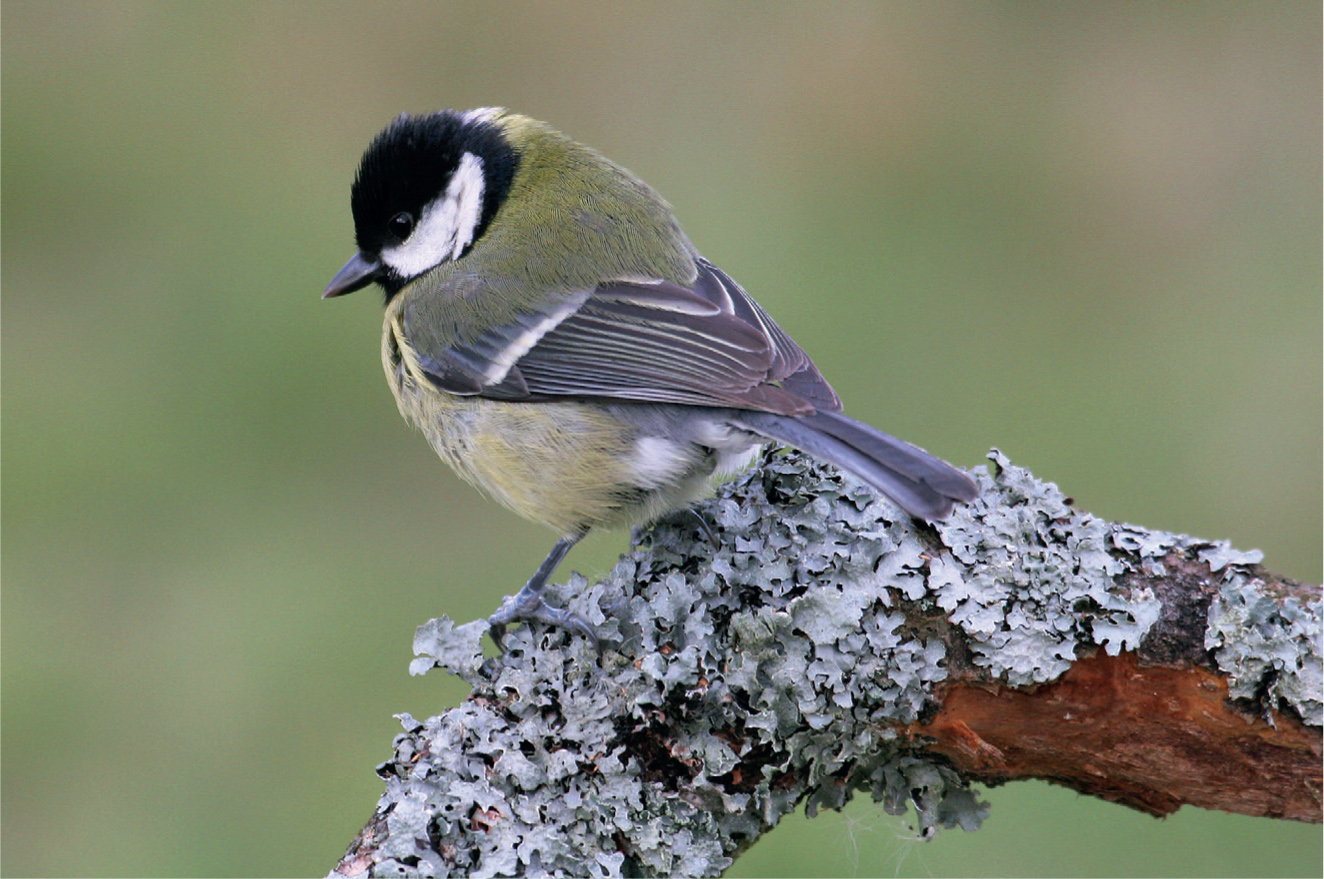
FIG 9. Being raised in an urban environment significantly reduces telomere length in Great Tits. Telomeres are the nucleoprotein structures found at the end of chromosomes and thought to promote genome stability. They have been linked to health and longevity. (Jill Pakenham)
Through an experiment in which nestling Great Tits were cross-fostered, Salmón et al. (2016) found that being raised in an urban environment significantly reduced telomere length compared to that of nestlings raised in a rural environment. However, this finding could not be replicated by a similar study in France (Biard et al., 2017). A larger study, this time of Blackbirds, also found that urban-dwelling individuals had shorter telomeres than those living elsewhere, adding evidence to this growing area of research interest (Ibáñez-Álamo et al., 2018). While Clotilde Biard’s study failed to find differences in telomere length between urban and rural populations of Great Tits in France, the work did reveal differences in chick growth (rural chicks were larger and heavier) and in plumage colouration (the yellow carotenoid-based plumage was more colourful in rural chicks – see also Chapter 2), suggestive of developmental constraints within the urban populations. Measures of ‘damage’ in relation to the impacts of urbanisation have been shown to vary between species with, for example, Salmón et al. (2017) determining that sparrow species show greater overall damage than that seen in tits.
There is the suspicion then, that gardens and the wider urban habitat are sub-optimal for many bird species (though not all). If this is the case, then we might expect to see the presence of three features that have been found to be characteristic of sub-optimal habitats elsewhere. These are:
i) a greater proportion of young breeders and more floating individuals;
ii) less stable populations, whose numbers fluctuate from year to year; and
iii) low breeding density.
The idea that populations living within sub-optimal habitats are more likely to fluctuate from year to year is linked to the notion of ‘source-sink’ dynamics, where populations living within high-quality habitats produce a surplus of young each year, but competition for breeding territories in these high-quality habitats is high, resulting in many young and less dominant individuals moving away to occupy territories in less optimal habitats. This also explains the first characteristic that we mentioned – the greater proportion of young birds in sub-optimal habitats. We certainly see this in suburban tit populations (Cowie & Hinsley, 1987; Junker-Bornholdt & Schmidt, 1999) but it isn’t always the case. Work on farmland Blackbird populations has revealed the presence of greater numbers of young males in this habitat (Hatchwell et al., 1996a), and David Snow – in his classic treatise on urban Blackbirds – speculated that urban populations act as a source population for a rural sink (Snow, 1958). Snow had demonstrated that his urban Blackbirds were generating a significant surplus of youngsters each year, some 1.7 yearlings per pair when only 0.7 yearlings per pair were needed to maintain a stable population.
Urban living may also lead to greater exposure to humans, perhaps resulting in increased tolerance of their presence and reduced levels of ‘fear’. Work on urban Great Tits has highlighted that they are less neophobic and show shorter flight initiation distances (see Chapter 6) than their rural counterparts (Møller et al., 2015; Charmantier et al., 2017). They also appear to have a more proactive coping strategy when dealing with stressful situations (Senar et al., 2017a).
DISEASE AND THE URBAN ENVIRONMENT
Chapter 4 explores the diseases affecting garden birds in detail, but it is important to give a brief overview here of how disease risks differ between urban and rural environments. Comparisons between the diseases of urban and rural populations of birds have yielded mixed results when it comes to seeking general patterns of occurrence and prevalence. Some studies, such as the work of Grégoire et al. (2002), Fokidis et al. (2008) and Evans et al. (2009a), have found reduced parasite loads in urban populations of garden bird species, including Blackbird. Others, such as Giraudeau et al. (2014) have found higher levels of disease in more urban areas. Giraudeau’s work revealed that the severity of coccidian infection in House Finch Haemorhous mexicanus and the prevalence of pox virus were both inversely related to the proportion of undisturbed habitat within the Phoenix metropolitan area. Patterns of disease infection along urban to rural gradients, and across the different habitats within the urban environment, may differ between diseases, in part a reflection of variation in how different diseases are transmitted. In the case of parasites, transmission may require an intermediate host that is absent from the urban environment (Sitko & Zales´ny, 2014), but for other diseases – including those transmitted between individuals through contaminated food – transmission rates may increase in gardens and other urban sites because of the high densities of birds attracted to garden feeding stations (Lawson et al., 2018). The provision of food at garden feeding stations may also influence disease dynamics (Galbraith et al., 2017a).
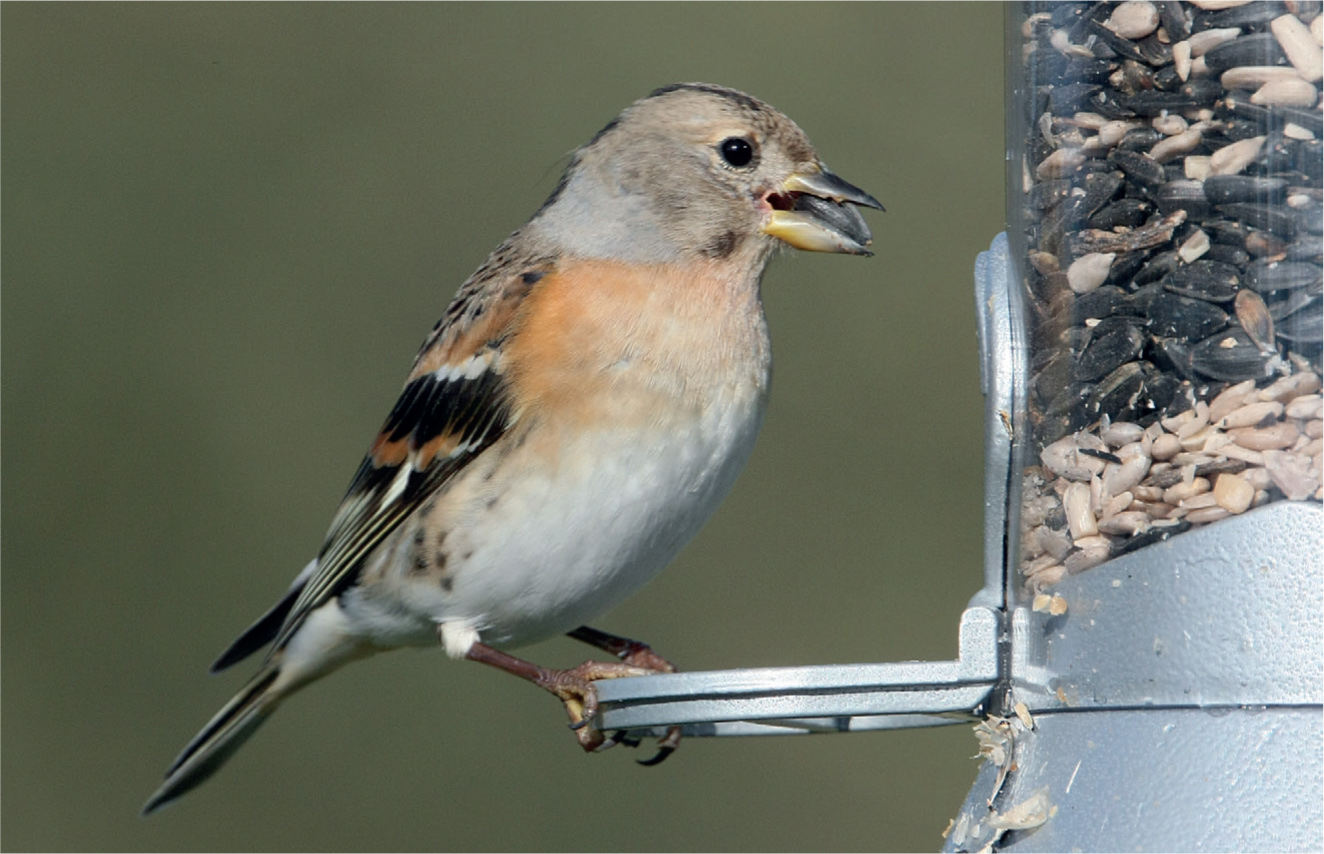
FIG 10. Garden feeding stations have been implicated in the transmission of disease between different species of garden bird, but the presence of supplementary food also has positive benefits for birds like this Brambling. (Jill Pakenham)
ARE GARDENS IMPORTANT?
As the figures presented within this chapter demonstrate, gardens and the wider built environment support significant proportions of the breeding populations of certain bird species. In addition, gardens and their associated resources may be important for particular birds at other times of the year or during periods when the availability of key resources within the wider environment is at a seasonal low. This underlines that gardens are important, and not just for species flagged as being of conservation concern. How we manage our gardens and the resources they contain has consequences for bird populations and, as we shall see later in this book, may also help to drive evolutionary change. It is important to remember that garden bird populations do not exist in isolation, since birds are well able to move between different habitats or regions. While gardens may not be as suitable as certain other habitats for breeding, they may be better in other ways, at least for some species.
We are, however, far from fully understanding the role that gardens play in a wider context, particularly in relation to source-sink dynamics, and it is certainly too early to be able to quantify the true value (or cost) of garden living for bird populations here in the UK, in Europe or North America, let alone elsewhere in the world. The mobility of birds makes it difficult to follow individuals throughout their full life cycle; in turn, this prevents us from being able to determine why particular individuals use gardens and the consequences or benefits of this use on future events in their lives. For a young Great Tit, raised in a piece of mature deciduous woodland bordering a city’s suburbs, the presence of suitable food in garden bird feeders may enable it to survive its first winter when it would otherwise have died. While this fortunate individual may fail to secure a prime woodland breeding territory the following year, and instead end up making a failed breeding attempt in a garden setting, it may still have the opportunity to occupy a woodland territory in a subsequent year. In the end, this individual’s lifetime reproductive success may still be better for having used a garden and its resources, than would have been the case had it only ever lived within a woodland site.
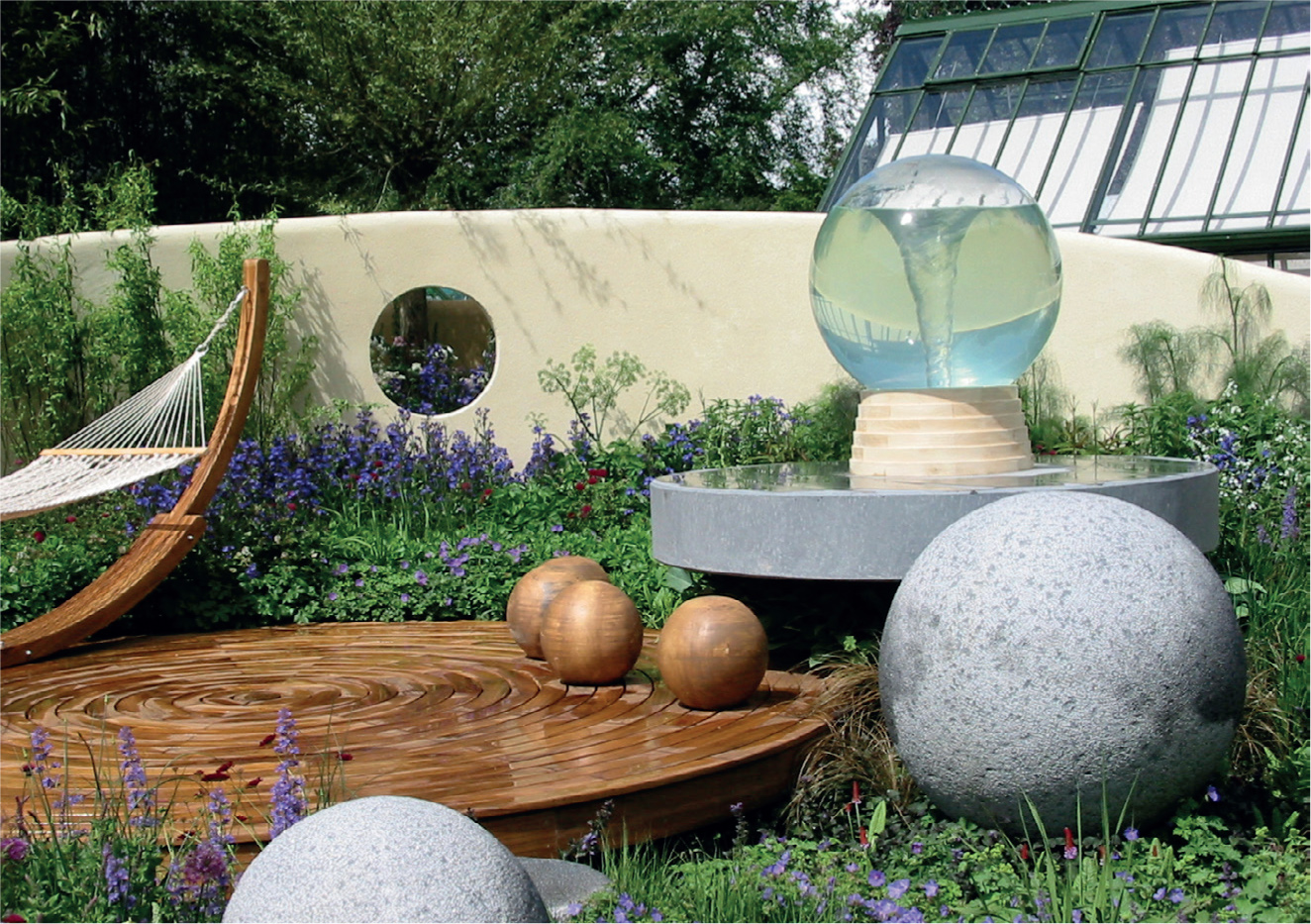
FIG 11. Gardens across the globe vary greatly in their structure and in the plants they contain, something that can reflect both cultural differences and local conditions. (Mike Toms)
CONCLUDING REMARKS
Before we leave this chapter and turn to look in more detail at particular aspects of the garden environment, it is worth reminding ourselves that the gardens present here in the UK, and across much of western Europe and North America, are often very different from those in other parts of the world. Thinking about gardens in a more global context forces you to move away from the predominantly recreational basis to gardens located within western Europe and North America. Many home gardens elsewhere are very different and provide families with space to engage in food production for subsistence or small-scale marketing. Such gardens may also play an important social or cultural role, perhaps acting as spaces within which knowledge related to agricultural practices can be shared. The management of these spaces creates structures and microclimates that are typically very different from the surrounding countryside; in this respect they can be considered alongside the more familiar urban and suburban gardens of western Europe, even though they look and act very differently (Guarino & Hoogendijk, 2004). It is known, for example, that ‘home gardens’ support high levels of inter- and intra-specific plant diversity, making them important in a global context, but far less is known about the role that they play for wider biodiversity and, in the context of this book, wild birds (Galluzzi et al., 2010). For the most part, however, we will just consider the gardens of western Europe, North America and Australasia in this book, something that also reflects where the greater amount of research has been carried out. The pattern of research worldwide isn’t just linked to particular geographic areas, since it has also been demonstrated that there is a positive and significant association between the degree of urbanisation of a species and how frequently it has been the subject of scientific study (Ibáñez-Álamo et al., 2017).
This chapter has highlighted the fact that gardens come in many different forms and that this has consequences for the communities of birds associated with them. The birds present in our gardens are the species that have, for the most part, adapted to the process of urbanisation to take advantage of the resources and other opportunities that gardens and the wider built environment provide. While some of these species populations are resident within the built environment, others make use of our gardens on a seasonal basis. Most UK gardens are located within highly urbanised landscapes; with urban land cover globally predicted to triple between 2000 and 2030 (United Nations, 2014), we can expect to see future changes in our garden bird communities. Such changes are part of an ongoing process that has altered the distribution of bird species, changed the composition of avian communities, brought about local extinctions and altered behaviour. It is these features and processes that we will examine of the following chapters, starting with feeding opportunities (Chapter 2), then moving on to an examination of breeding behaviour (Chapter 3), disease risk (Chapter 4) and behaviour (Chapter 5).
CHAPTER 2
Foods and Feeding
FEEDING WILD BIRDS IS UNDOUBTEDLY a popular pastime here in the UK and a great many of us put out mixed seed, sunflower hearts and fat- or suet-based products for our garden birds. The addition of such food to the environment represents a substantial supplementation of the resources available to wild birds, yet we still lack a clear understanding of its effects. In a wider research context, we know that food supplementation can increase survival rates (Brittingham & Temple, 1988a), change community and population structure (Galbraith et al., 2017b), alter behaviour (Saggese et al., 2011; Plummer et al., 2015) and impact on wider biodiversity (Orros et al., 2015a). It has also been linked to disease transmission in birds (Lawson et al., 2018) and to health and well-being benefits in people.
Through this chapter we will explore how and why supplementary food is provided to garden birds, how provision varies across countries, cities and cultures, and the consequences that such provision has for the birds that visit our gardens to partake of this significant resource. Understanding why people feed wild birds and the extent to which they appreciate its costs and benefits will be central to our exploration, as will a review of the scale of food provisioning, which is where we will start this chapter.
THE PROVISION OF FOOD FOR WILD BIRDS
It has been estimated that between one-quarter and two-thirds of households across major parts of Europe, North America, Australia and New Zealand provide food for wild birds (Thomas, 2000; Ishigame & Baxter, 2007; United States Fish & Wildlife Service, 2011; Davies et al., 2012). Within the UK, and using figures from the English Housing Survey and other studies, Davies et al. (2009) reported that 48 per cent of households, and 51 per cent of households with a garden, participated in feeding wild birds. Perhaps more interestingly, the study also reported that 28 per cent of households, and 23 per cent of households with a garden, specifically used bird feeders. An earlier and often quoted study by Cowie & Hinsley (1988a) put the figure at 75 per cent, but was based on a small sample of households (in Cardiff) and did not properly account for those questionnaires that were not returned. Work in Reading, Berkshire, using a face-to-face questionnaire approach outside supermarkets, came up with a figure of 55.3 per cent for the proportion feeding wild birds, of which 65 per cent reported that they fed all year round (Orros & Fellowes, 2015b). Marketing work by the RSPB, using two separate telephone surveys of randomly selected groups of 1,000 people and carried out in summer and winter 2004, indicated that 56 to 61 per cent per cent of people over the age of 16 had fed their garden birds during the past year (RSPB, unpublished).
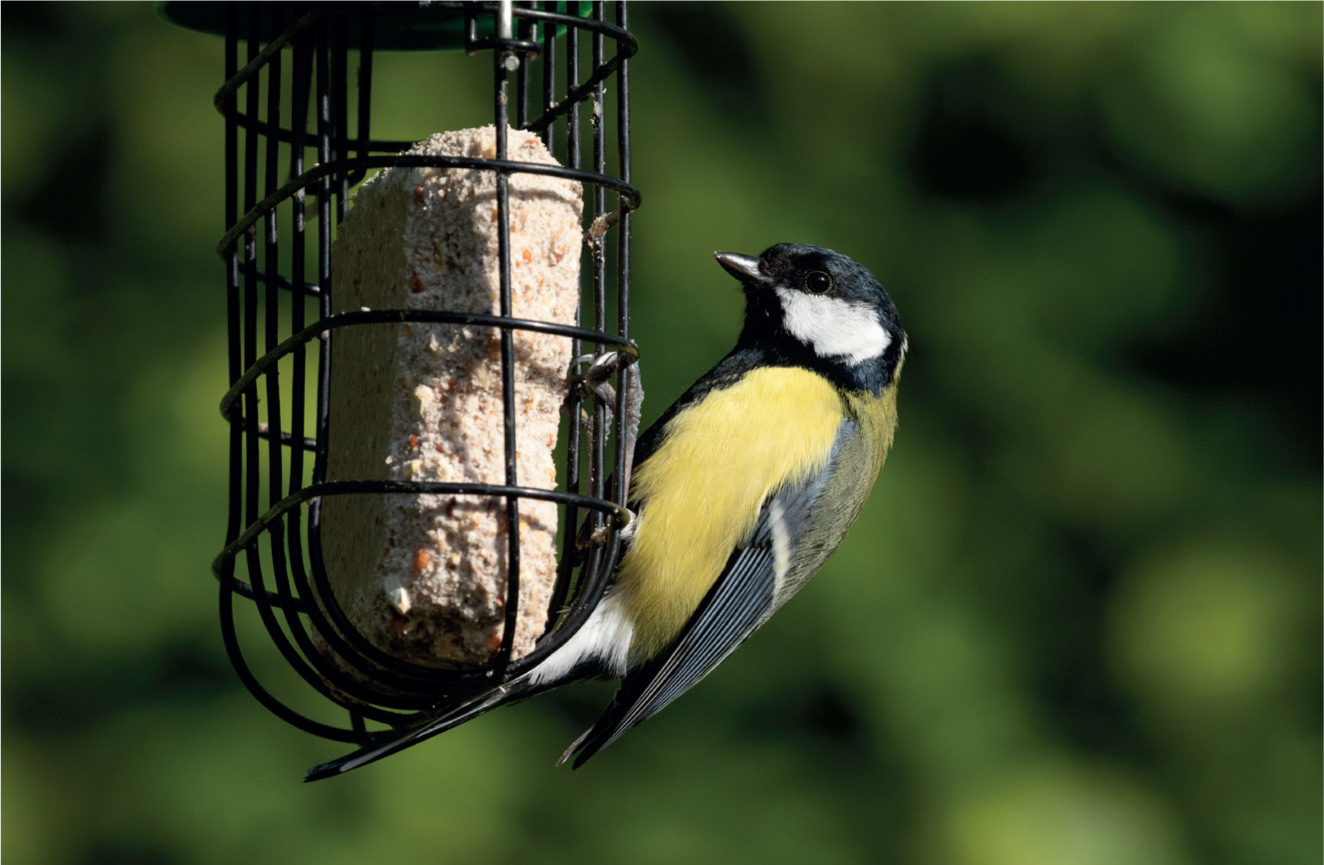
FIG 12. Suet-based foods, such as fat balls, have become very popular with UK householders, their use targeted at small garden birds like tits and Starlings. (John Harding)
A rough calculation by Zoe Davies and colleagues, based on the population sizes of birds known to use seed feeders, suggests that there is at least one bird feeder for every nine potentially feeder-using birds. This does not allow for the fact that many households provide food in more than one feeder, or that many bird feeders are sitting empty at any one point in time. RSPB data, again from their marketing survey, suggest that on a typical summer’s day one in every seven gardens has at least one empty bird feeder. Even so, it does underline the potential scale of food provisioning taking place within the UK – something Davies et al. (2009) have suggested could equate to a standing crop of 2,580 tonnes of bird food. Figures from the Pet Food Manufacturers Association put UK bird food sales at c. 150,000 tonnes annually, representative of an annual consumer spend in excess of £200 million. O’Leary & Jones (2006) suggest that in excess of 500,000 tonnes of food is provided annually across the UK and US combined, while United Nation’s figures from 2005 put the global bird food industry’s value at $5–6 billion, with growth of c. 4 per cent annually since the 1980s (Lin, 2005).
Thanks to the periodic National Survey of Fishing, Hunting, and Wildlife-Associated Recreation, we know that expenditure on wild bird foods within the United States has doubled over a 20-year period, exceeding $4 billion per year by 2011 (United States Fish & Wildlife Service, 1991; 2011). We lack a comparable survey within the UK, and securing commercially sensitive sales information from the wild bird care sector is problematic, but it is thought that the current annual UK spend on wild bird care products (food, feeders and nest boxes) is between £220 million and £500 million (Fuller et al., 2012).



